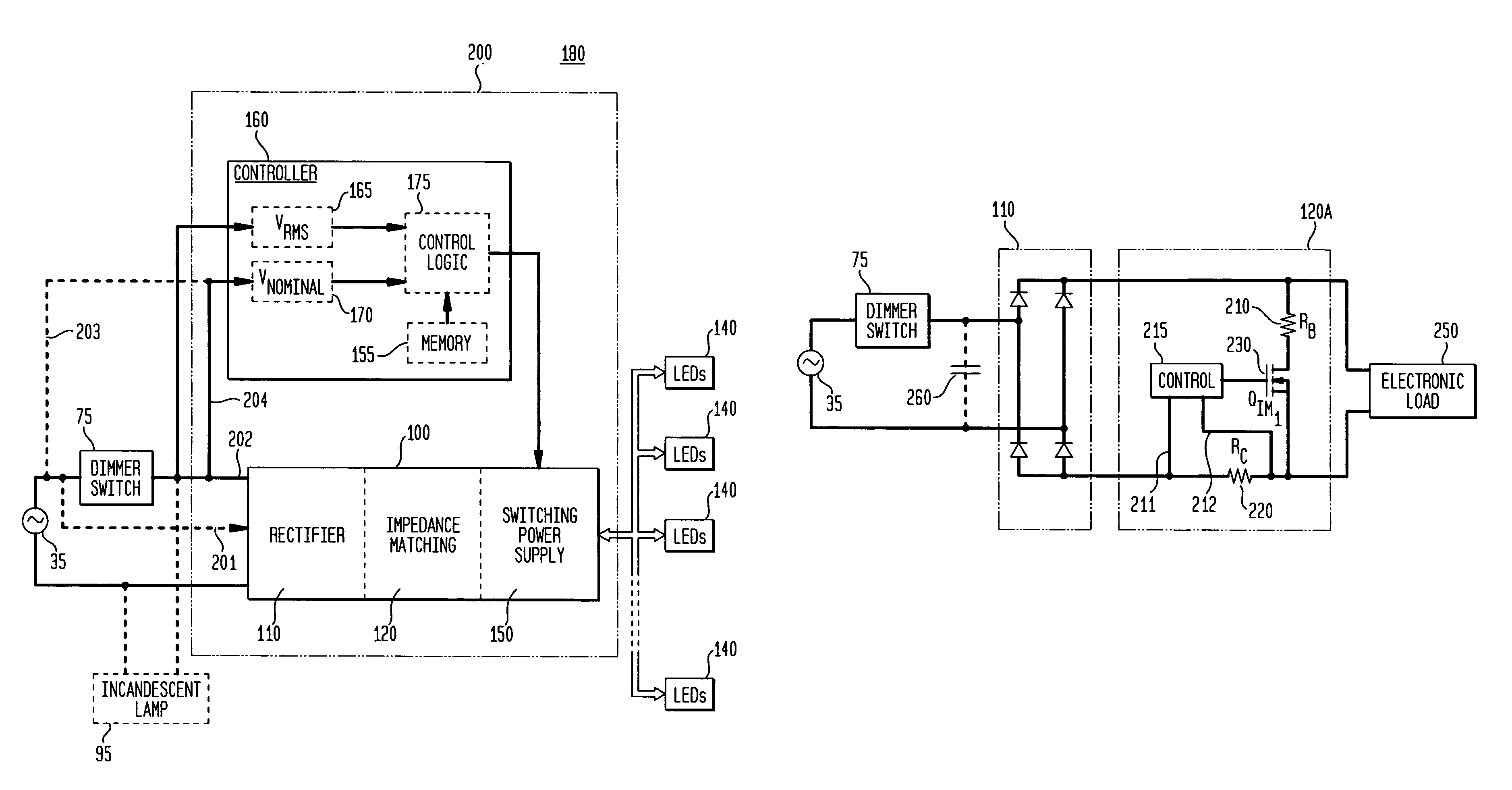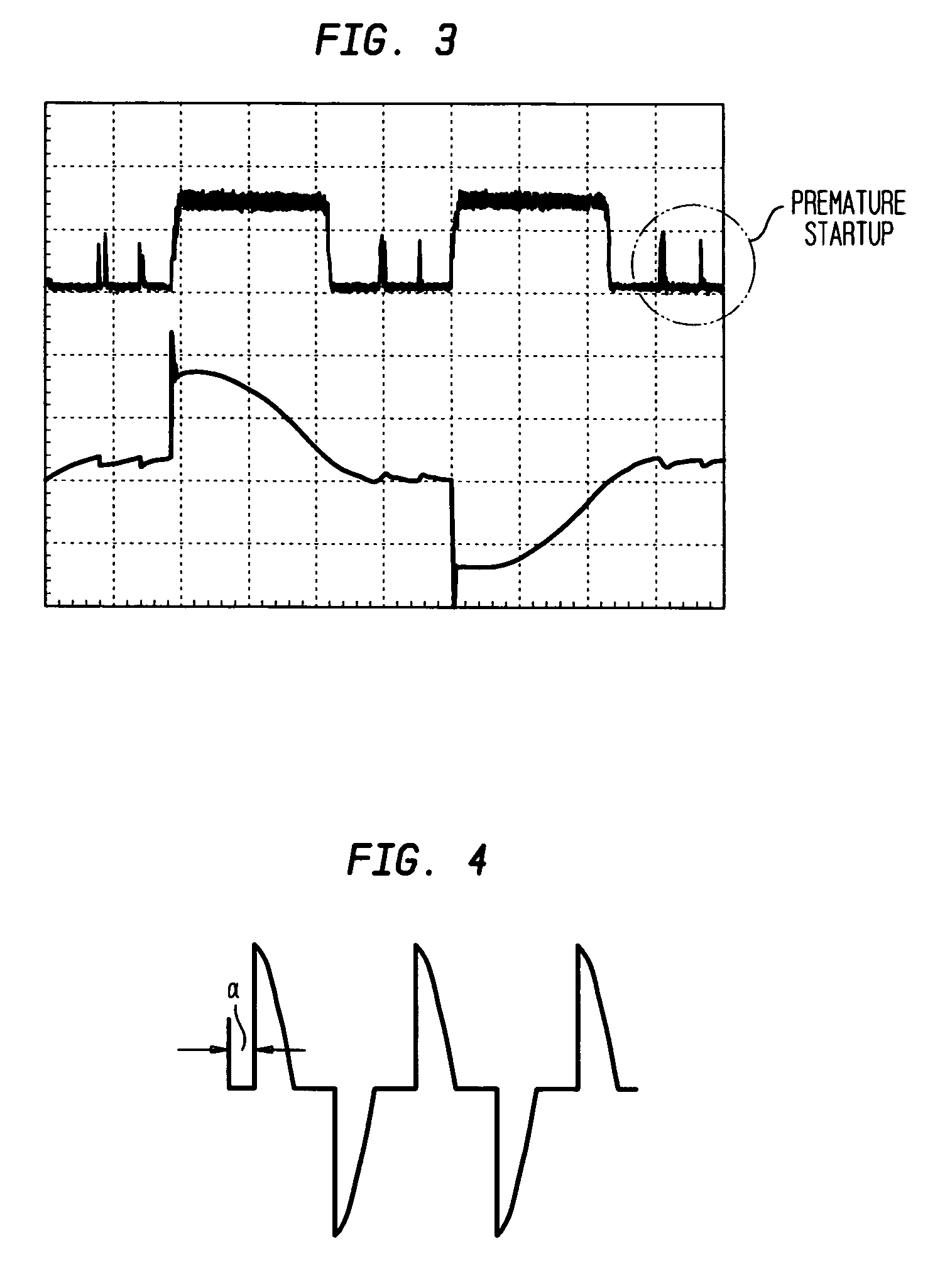Current regulator for modulating brightness levels of solid state lighting
a current regulator and brightness level technology, applied in the direction of electric variable regulation, process and machine control, instruments, etc., can solve the problems of low efficiency, limited to deliver relatively low power, and over-complexity of various led drivers, and achieve the effect of low cost components
- Summary
- Abstract
- Description
- Claims
- Application Information
AI Technical Summary
Benefits of technology
Problems solved by technology
Method used
Image
Examples
Embodiment Construction
ulated output voltage from a standard dimmer switch.
[0035]FIG. 5 is a high-level block and circuit diagram of a generalized prior art current regulator (or converter).
[0036]FIG. 6 is a block diagram of an exemplary first embodiment of a current regulator (or converter) in accordance with the teachings of the present invention.
[0037]FIG. 7 is a block diagram of an exemplary second embodiment of a current regulator (or converter) in accordance with the teachings of the present invention.
[0038]FIG. 8 is a circuit diagram of an exemplary first embodiment of an impedance matching circuit for a current regulator (or converter) in accordance with the teachings of the present invention.
[0039]FIG. 9 is a circuit diagram of an exemplary second embodiment of an impedance matching circuit for a current regulator (or converter) in accordance with the teachings of the present invention.
[0040]FIG. 10 is a circuit diagram of an exemplary embodiment of a switching power supply for a current regulato...
PUM
 Login to View More
Login to View More Abstract
Description
Claims
Application Information
 Login to View More
Login to View More - R&D
- Intellectual Property
- Life Sciences
- Materials
- Tech Scout
- Unparalleled Data Quality
- Higher Quality Content
- 60% Fewer Hallucinations
Browse by: Latest US Patents, China's latest patents, Technical Efficacy Thesaurus, Application Domain, Technology Topic, Popular Technical Reports.
© 2025 PatSnap. All rights reserved.Legal|Privacy policy|Modern Slavery Act Transparency Statement|Sitemap|About US| Contact US: help@patsnap.com



